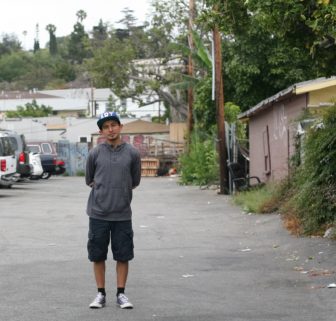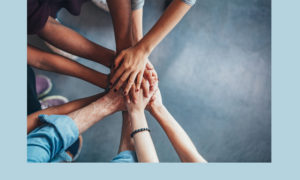 It was only two years ago that I was walking home from the bus stop one afternoon when I found out about the new InsideOUT Writers office in my neighborhood. Life would never be the same.
It was only two years ago that I was walking home from the bus stop one afternoon when I found out about the new InsideOUT Writers office in my neighborhood. Life would never be the same.
Eight years prior, in 2006, I was one of more than 1,700 young people in California’s jail cells.
I was 15 years old then, inside of the KL unit at Central Juvenile Hall in East Los Angeles, facing six felony charges with a minimum of two years inside the youth authority prison if convicted.
But I was already convicted. Shepherded by probation officers up and down the halls at Central prior to any “official” sentencing, I was guilty before proven innocent — until the IOW program came along.
Once a week, each Wednesday night, the InsideOUT Writers created a space in the halls where I could not only tell my story, but where I could do so without the fear of being judged.
In every session, freedom was in the openness of a blank sheet of paper, while power emanated from the pen in my hand. There was also something about writing on the page that couldn’t betray me, like my tone or my body, something that couldn’t lie. The same was true for my peers: No matter what was going in the halls, at IOW we started over.
Now, nearly 10 years later, I have the privilege of working with IOW as a writing instructor. I not only get to partner up with the same teacher who introduced me to the program while I was inside — the one and only Ms. Roberta — but I also hold an editing position for a new series of publications by InsideOUT Writers in collaboration with Youth Today.
I might just be one of the luckiest kids ever to meet the IOW program, or it might just be fate. In any case, even if my prospects today look better than they did 10 years ago, there’s still a lifetime of work to do.
As Toni Morrison once said: “The function of freedom is to free someone else.”
Today the United States has the highest rate of youth incarceration of any developed nation, with an estimated 70,000 young people behind bars in the country on any given day.
The vast majority of these young people are not in jail for violent crimes. According to a 2013 report released by the Annie E. Casey Foundation: “In every year for which data are available, the overwhelming majority of confined youth are held for nonviolent offenses. In 2010, only one of every four confined youth was locked up based on a Violent Crime Index offense (homicide, aggravated assault, robbery or sexual assault).”
The report also shows that the vast majority of incarcerated youth in the U.S. are black-, brown- and native-skinned: “African-American youth are nearly five times more likely to be confined than their white peers [while] Latino and American Indian youth are between two and three times more likely to be confined.”
Unlike Brock Turner of Stanford University or Austin Wilkerson at University of Colorado-Boulder, black and brown kids arrested for nonviolent crimes in the United States today are still more worthy of prison sentencing than convicted rapists. The system is broken.
Despite this disparity, millions of people across the country long to make “America great again,” based on the notion that somehow their country has been taken from them. Perhaps if they saw the faces and heard the voices of the youth whose only experience with such greatness has been on the receiving end of sentences handed down to them by the nation’s courts and officers, they’d reconsider what’s actually been taken, and from whom.
On the streets of inner cities across North America, young people of color are judged long before their hands are placed in handcuffs and placed in a courtroom. When their fates are decided by an incentive to punish rather than guide them, the impact on their lives often goes beyond four or eight years. To face the nation’s constitutionalized wrath is an unforgettable experience.
But when these same young people are given an opportunity to tell their stories, what they share is almost never less than eye-opening. During this school year, InsideOUT Writers will have the privilege of working with Youth Today to show readers a side of incarcerated youth often hidden from the facts, statistics and courtroom observations: their faces beyond their skin tone or crime, the sound of their voices and how we still dream even American dreams of freedom, health and opportunity.
Here’s just one sample of the powerful voices we plan to share:
“Sometimes I wonder if I’ll ever stop being the system’s. They have control over me, I can do so little. I say the hell with the system, but my judge determines if I get my freedom back or not. Yes, the system gives me a lot of opportunities and I do take advantage, but I’m also missing out on so much like spending time with my sister. The hell with the system. I say I don’t care but I do because I want to get the hell out. It’s hard when it seems like no one loves me or cares. How can I move on when I got no support? But the hell with it I say ‘cause I got me. I love myself. I care for me.”
– Name Withheld, IOW Alumni, was 16 when she wrote this piece last spring at Camp Dorothy Kirby, Los Angeles
Jimmy “Jimbo” Recinos, 25, is a writer from Central Los Angeles. When he’s not venturing through the city for his website JIMBO TIMES, he can be found at the InsideOUT Writers office, where he serves as an editor and instructor for the program. He is a graduate of the University of California-Davis class of 2014, and an avid bookworm.































